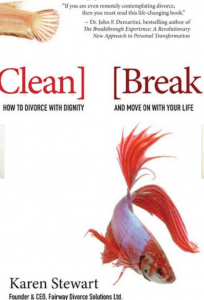 Nothing like following through on an idea, that’s what Karen Stewart did after an ugly divorce. Her personal experiences led her to starting Fairway Divorce Solutions, an alternative common sense approach to dealing with family divorce. An approach where the order of resolution matters, a lot!Others seem to agree, as Fairway Solutions is now being franchised across North America.
Nothing like following through on an idea, that’s what Karen Stewart did after an ugly divorce. Her personal experiences led her to starting Fairway Divorce Solutions, an alternative common sense approach to dealing with family divorce. An approach where the order of resolution matters, a lot!Others seem to agree, as Fairway Solutions is now being franchised across North America.
A couple of months back I attended an Open House for the new Victoria Fairway office, where I met Karen, and chatted at length with Deb Walushka-Longphee (thanks Deb), franchisee of the local Fairway office, along with her partner, Greg Longphee (whom I met initially at a local business mixer). They also left me with a copy of Karen’s 2008 book, Clean Break: How to Divorce with Dignity and Move On with Your Life, which I managed to read over the holidays.
Fairway Divorce Solutions
 I find the Fairway an interesting model for mediating divorce. I see it as a hybrid model; combining elements of facilitation/negotiation/mediation/conciliation, along with a strategic business approach.
I find the Fairway an interesting model for mediating divorce. I see it as a hybrid model; combining elements of facilitation/negotiation/mediation/conciliation, along with a strategic business approach.
Here’s some of its key elements:
- First things first; the value of the assets is agreed to first, before negotiating the division of assets, pay attention to details
- Parenting and child support issues only addressed after resolution is reached on all financial matters
- Most (not all) of the negotiation is done independently with each spouse; an independently negotiated resolution process
- Focus is on now, and a positive future
- Usually 120 days or less to resolution (after finances are disclosed)
- Well-articulated work plan (a road map to resolution)
- Fixed fee service (no hourly billing)
- Facilitator is a financial expert, along with negotiation/mediation experience
- Lawyer called in at the end, only to finalize the resolution agreement
- when you trust the process, you can trust the outcome
Separating emotions and process
The Fairway approach seeks to take emotion out of the negotiations, as much as possible. Talking about who gets what before values are agreed upon will probably lead to endless bickering and angry disputes (especially with both parties in the room at the same time). As long as values remain fluid and unfixed, how can there be any grounds for fair negotiations and fair outcomes? And if we can’t even determine the couple’s net worth, how can we possibly decide what constitutes an equal half?
A new paradigm for mediating divorce? (and more)
The Fairway approach has much in common with traditional mediation and collaborative law approaches; much less with the adversarial litigation approach. And, Karen sees value in the mediation and collaborative law approaches to dealing with divorce.
What is unique for me is how the Fairway model builds heavily on a business/project management approach to get to resolution. I recognize this, from my own background in project management. It also reflects Karen’s background, as an entrepreneur who has specialized in the financial industry for over 2 decades, building and selling a number of financial institutions (not too mention getting entangled in a divorce that took years, numerous lawyers, and over million dollars to resolve).
Given the Fairway approach reduces the face-to-face confrontation so common when both parties are in the room, it suggests to me that online dispute resolution is really underutilized as an effective way to mediate divorce (and family disputes!); especially if the online processes operated along similar lines to Fairway.
So, perhaps the money before kids, and independently negotiated approach can be adapted to other dispute resolution and consensus building contexts?
What do you think?
What other personal, organizational or community contexts do you think lend themselves, more so than ever, to resolving issues in a specific order?
[If you enjoyed this post, please consider leaving a comment or subscribing to this blog.]

Thanks for your support, Ben – its uplifting to see the Fairway Process strikes a chord! As you say, first things first; and Fairway Divorces strategic resolution-based model works for just that reason it helps divorcing couples take away the emotion and focus on saving their assets and doing the best for the children. Needless to say, yes, we certainly believe a process like Fairways can work in other contexts!
You’re welcome Deb. It was a fun open house. I got to meet other interesting people in the community too, by attending .. in addition to getting better acquainted with your operations. Best of luck going forward.
Divorce is an almost epidemic in Western societies and it creates pain and hurt among our children. But it doesn’t have to scar them because on the other side of the pain is joy. But there is a way you must navigate through the pain for you and your children.